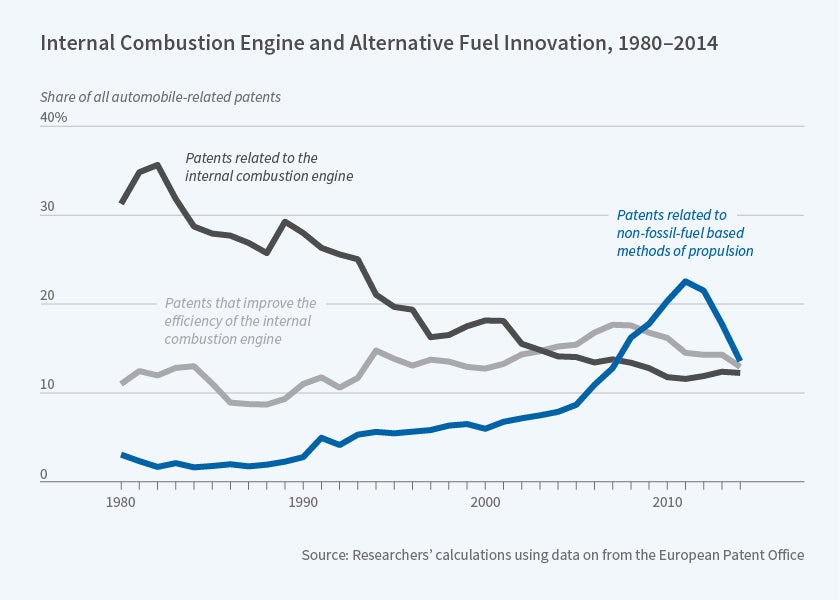Environmental Preferences, Competition, and Firms’ R&D Choices
Firms in automobile-related businesses whose consumers are environmentally focused are more inclined to develop sustainable technologies, particularly in markets defined by higher levels of competition.
Consumers’ environmental preferences, in conjunction with the level of market competition, affect firms’ decisions to invest in environmentally friendly innovations, according to findings reported in Environmental Preferences and Technological Choices: Is Market Competition Clean or Dirty? (NBER Working Paper 26921), a study by Philippe Aghion, Roland Bénabou, Ralf Martin, and Alexandra Roulet.
The researchers hypothesize that consumers care about the environmental footprint of products they buy, and that firms consider these preferences when choosing how much to invest in research and development on “clean” or “dirty” innovations. They then use data on patents, consumers’ environmental preferences, and product-competition levels in the automotive industry for over 8,500 firms in 42 countries between 1998 and 2012 to evaluate how companies respond to changing consumer sentiments.
They find that firms catering to more environmentally focused consumers, measured as a weighted average of support for pro-environment positions in the markets in which the firms sell their products, appear to reallocate their resources toward developing sustainable technologies. The share of dirty-technology patents declines for these firms. They also find that the relationship between consumer preferences and firms’ investments in clean technology is stronger in markets defined by higher levels of competition.
The researchers note that the link between competition and green investment is a priori ambiguous. High levels of competition could result in less environmentally friendly practices if firms attempt to keep prices low, but they could also incentivize companies to invest in green technology as a means of differentiating their products. Both effects may be present; the researchers find that the latter effect prevails.
For firms exposed to more sustainability minded consumers, the growth rate of clean patents is 14 percent higher than the growth rate for dirty patents; that difference jumps to 17 percent in more competitive markets. To put these numbers in context, the researchers compare the effects to the impact of a significant hike in fuel prices. They find that realistic increases in environmentally friendly attitudes and product competition — shifts on par with historical trends — would have the same impact on firms’ investments in clean technology as a 40 percent jump in fuel prices.
The findings suggest that consumer preferences for different types of products can have a meaningful impact on firms’ R&D decisions under some conditions. While each individual consumer’s choice to “buy green” may not have a large effect on pollution, an environmentally focused consumer class can alter firms’ willingness to invest in R&D directed toward environmentally friendly products, particularly in competitive markets.
—Dwyer Gunn



